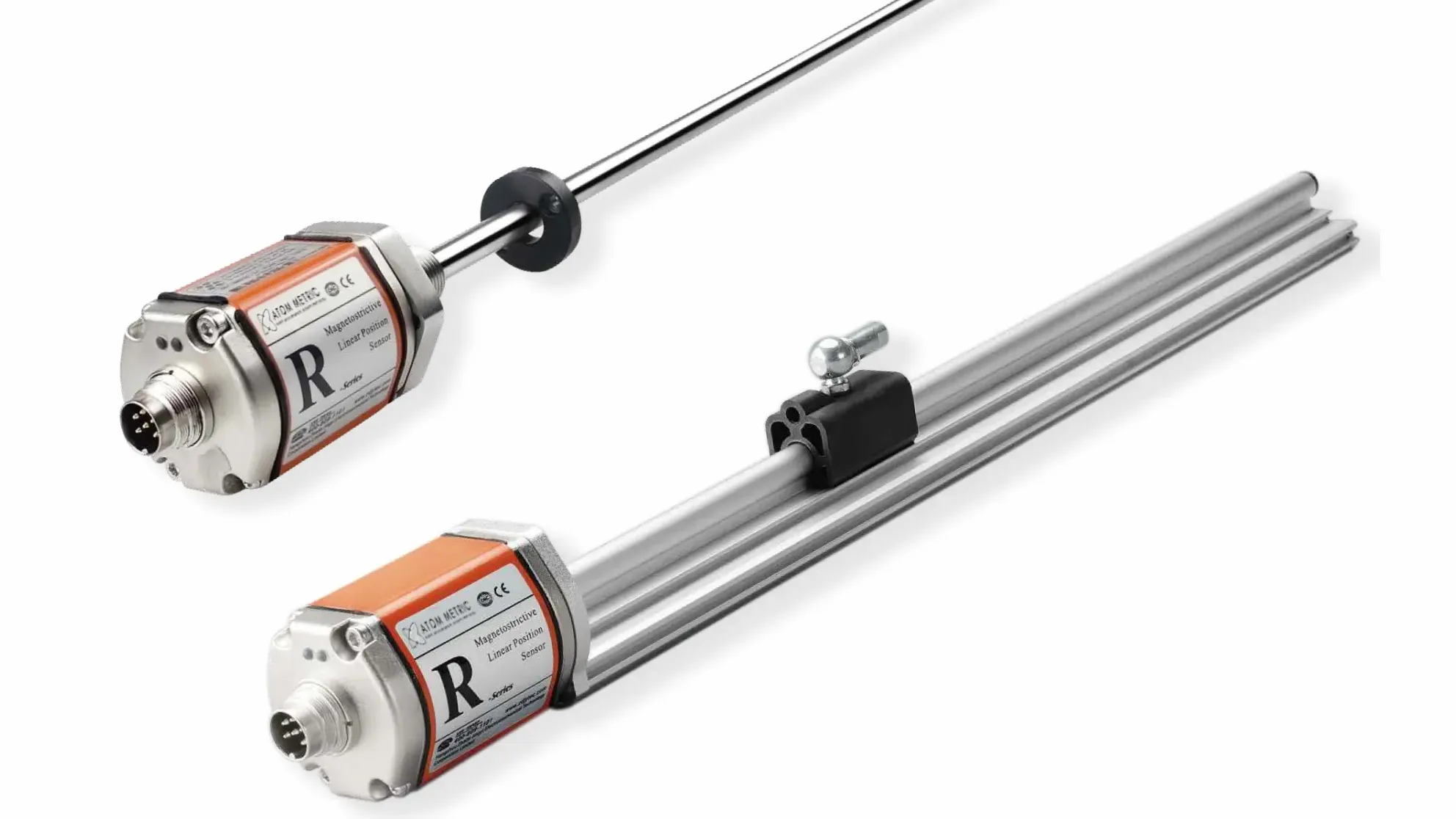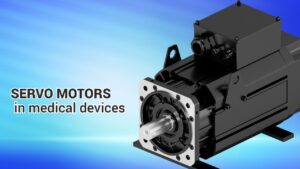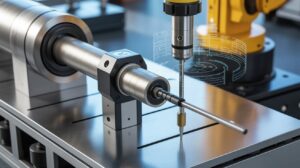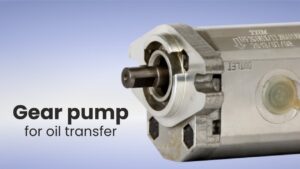Precision and control are paramount in industrial and mobile applications. From massive construction equipment and automation in manufacturing to hydraulic presses in metalworking, maintaining precise control over motion is crucial to the safety, efficiency, and lifespan of equipment. This is where a linear position sensor for hydraulic cylinders is critical.
In this blog, we will identify reasons why incorporating a linear position sensor in your hydraulic system is advantageous, how it works, its primary benefits, and where it fits across other industries.
What Is a Linear Position Sensor for Hydraulic Cylinders?
Hydraulic cylinders, as the name implies, are hydraulic-powered drives that can create motion in a variety of forms.
A linear position sensor hydraulic cylinder is an in-cylinder position sensor that measures the position of the piston inside the cylinder. The data is then sent to the machine’s control system, making it possible to control the extension, retraction, and speed in precise detail.
Embedded sensors (sensors located inside the cylinder) or external sensors (mounted outside the cylinder) are typically based on magnetostrictive, potentiometric, inductive, or optical systems. Magnetostrictive sensors are commonly used owing to their non-contact construction, robustness, and accuracy.
Why Is It Important To Monitor Cylinder Position?
Given the dynamic environment of a hydraulic application, cylinder position monitoring is imperative because timing, synchronization, and repeatability are keys to success. For instance:
For instance, for an excavator, knowing where the boom cylinder is means that you can dig faster and safer.
As an example, in manufacturing lines, position data helps robotic arms perform moving sequences accurately and perfectly many times.
For example, in presses, cylinder position monitoring prevents overextending (which could cause damage) during operations.
In fact, when feedback is not continuous, systems can become ineffective, misaligned, or even dangerous.
Advantages of a Linear Position Sensor Hydraulic Cylinder
Precision and Repeatability
Hydraulic cylinders take advantage of linear position sensors that relay instant feedback to your control systems, thereby achieving micrometer-range precision. It ensures that the movements are repeatable (used in applications such as injection molding, packaging, CNC machining, etc).
Enhanced Safety
Sensors are also used to constantly monitor the stroke position, which helps avoid accidents. If combined with limit switches or safety triggers, they can stop machinery from overextending or operating beyond defined boundaries.
Improved Machine Efficiency
Sensors help to decide and drive a fast feedback loop without compromising accuracy, enabling a quicker cycle. It also tends to eliminate excessive force and misalignment, saving wear and tear whilst increasing throughput.
Predictive Maintenance
So many smart sensors are able to measure the motion patterns or motion delays, potentially indicating seal wear, fluid leakage, or component failure. This enables scheduling maintenance even before a breakdown takes place.
Better Integration With Automation Systems
For decades now, modern-day industrial settings have progressively become digitized, and connecting a linear position sensor hydraulic cylinder module, PLC or SCADA system provides better automation, as well as data logging and diagnostics.
What Are the Popular Applications of These Sensors?
The linear position sensors’ use cases in hydraulic cylinders cover a wide range of industries:
Earth-moving Equipment: Shovels, bulldozers, cranes
Agricultural Machinery: Harvesters, seeders, tillers
Manufacturing & Robotics: Assembly lines, presses, robotic arms
Material Handling: Forklifts, scissor lifts, conveyors
Aerospace & Defense: Landing gears, actuated components
Marine & Offshore: Winches, rudders, loading systems
In these markets, the responsiveness and accuracy of these systems drive the necessity of linear position sensors.
Selecting an Appropriate Linear Position Sensor for Hydraulic Cylinder
So, when you are choosing any sensor, you should keep the following things in mind:
Stroke Distance: Choose a sensor that covers the entire range of motion of the piston.
Mounting Type: Consider in-cylinder (embedded) or external mounting style based on available space and needs for retrofitting.
Environmental factors: The sensor should be capable of operating under pressure, temperature, vibration, and possible fluid exposure.
Type of Output: Analogue, Digital, or CAN-based output signals you may need as per your controller.
Durability: Sealed, robust housings rated for industrial environments.
Smart Systems and Industry 4.0 Integration
The transition of industries from traditional manufacturing to smart factories under the spectrum of Industry 4.0 is eventually playing a significant role in making linear position sensors for hydraulic cylinders more indispensable. The real-time data from these sensors can be used with PLC, HMI, and cloud-based monitoring platforms.
It also allows predictive maintenance, remote diagnostics, and granular performance analytics. As we move to the era of automation and machines with advanced IoT capabilities, adopting sensors that aid in digital transformation will help your devices keep up with the future. Smart sensors are the link between hydraulic power and intelligent control, whether you’re operating a factory floor or a fleet of heavy equipment.
Conclusion
Adding a linear position sensor hydraulic cylinder goes beyond a technical improvement but is a step towards more future-oriented, safer, smarter, and more efficient operations. Such sensors are invaluable additions to hydraulic cylinder-driven systems, providing everything from accurate cylinder position monitoring to greater intelligence of the machine.
THM Huade can provide the new design or replace the old one, and the linear position sensor we provide is high-performance, high-reliability, long-life, and low-cost, suitable for the current demand for modern industrial machinery. THM Huade executes engineering reliability so that you get your systems to continue to be ahead.
For precision, performance, and peace of mind, optimize your hydraulic system with THM Huade.
FAQs
What is the accuracy of linear position sensors in hydraulic applications?
General full stroke accuracies (from the best quality sensors) are in the range of ±0.01%. For instance, the magnetostrictive sensors provide very high levels of accuracy and repeatability, which is excellent for applications that require precision.
What is the difference between contact and non-contact sensors?
Contact sensors (e.g., potentiometers) — these determine position based on physical contact and may wear out over time. Non-contact sensors, such as magnetostrictive, utilize the magnetic field, etc., to take wear-free position readings, ideal for rugged applications over long service periods.
Are linear position sensors impervious to hydraulic fluid or punishing environments?
Absolutely. Industrial sensors work in high-pressure fluid environments and must operate reliably. When choosing a sensor for harsh conditions, always verify chemical compatibility and appropriate IP ratings.
How does a linear position sensor aid in diagnosing hydraulic systems?
When it gives a real-time readout of the position of the piston, the operator and/or the control system can detect anomalies (i.e., slower motion, a sticking point, or incomplete stroke). Such data can be used to diagnose possible problems (such as fluid leakage or wear) in the internal components of the system before they disrupt normal operation, allowing for better diagnostics and preventative maintenance.



